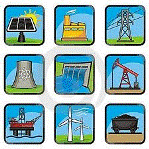Department of Agricultural Economics: Undergraduate Research
Date of this Version
Fall 12-13-2019
Document Type
Editorial
Citation
Bogert, Samuel. Op-Ed from ENSC 230. Energy and the Environment: Economics and Policy, University of Nebraska-Lincoln, Department of Agricultural Economics, Fall 2019.
Abstract
The Wind Energy Adaptation of Nebraska
Today there are many things in the world that we rely on, heaters for warmth, cars for travel, and many other commodities that our way of living is dependent on. One of the most overlooked aspects of society is the need for power. Each and every American is dependent on power somehow, yet the vast majority of us do not think twice when flipping a switch. We all know that flipping a switch means the lights come on, when turning the ignition in our car we don’t think of the process behind the engine starting or how the gas is produced in order for our cars to run. Americans and a large part of the world has really no idea what kind of energy we use, where it really comes from, or the actual cost behind it. Although with the recent discussions about climate change and our actions that are affecting the world there is a better understanding of what our need of power is actually costing. Most of the time Gas, Coal, and Petroleum are used to run power plants in order to power our cities and we largely overlook the repercussions behind this production. Coal, especially here in Nebraska, has contributed a large amount of greenhouse gas emissions. From 1980 to 2017 there has been almost a 63% increase in Millions of metric tons of carbon dioxide emissions in the state of Nebraska increasing from 29.7 to 47.7. At its peak in 2013 Nebraska was producing 53.2 million metric tons of carbon dioxide in all sectors. Nebraska as a state could do more to reduce our carbon dioxide emissions by subsidizing renewable energy. Where we are located within the country has created the perfect opportunity for Nebraska to be a leader in renewable energy through development of wind turbines. Nebraska has one of the biggest advantages due to the abundance of wind that all Nebraskans are so fond of. Nebraska currently produces 14.1% of its energy from wind farms, which equates to around 497,900 homes out of the 1.9 million residents. This seems to be a good mark for the state, however our next door neighbor Iowa has taken full advantage of their wind resources. Iowa leads the nation in wind energy production, producing more than a third of their overall energy from wind energy alone. Iowa has 1 cent per kilowatt hour tax credit that incentivises production of wind farms in the state, whereas Nebraska has no incentives for the production of wind energy due to the Nebraska Public Power District. Tax incentives could be effective is giving tax credits to those private investors in wind power in Nebraska, through income tax those in Nebraska could receive tax credits similar to those in Iowa. Nebraska’s competitive market for wind energy has been largely overlooked due to competition for cropland and pasture. Wind turbines however could help Nebraska lead the nation as a supplier for energy and with it could bring in new business and help lower the cost of living. As technology advances there with it comes a reduction in cost to produce energy from wind. Although we as a nation seems to be backtracking on our efforts to produce renewable energy. In an effort to save the dying industry that are coal plants President Trump has rolled back many of the EPA regulations set into effect by former President Obama. Nebraska State Senator Ben Sasse has stated in recent news that he is in support of President Trump’s rollback on former President Obama’s coal regulations but as the further degradation of environmental policy continues the renewable energy efforts seem to be reduced. There have been some relaxation efforts on wind energy laws, mainly some laws that have been repealed are how private renewable energy developers do not need to find a buyer for the electricity being generated before constructing wind turbines. The biggest competitor of wind energy for its place in Nebraska is agriculture and the demand for land that it brings with it. In order for wind turbines to be effective you cannot have them within certain distances of each other. This creates a problem with the need for land being so prevalent within the state of Nebraska which is 93% farmland. However certain policies like CRP have been enacted in order to preserve the natural landscape of Nebraska in certain areas, this policy could be adapted to suit the development of wind farms in Nebraska.
Included in
Environmental Indicators and Impact Assessment Commons, Natural Resources and Conservation Commons, Oil, Gas, and Energy Commons, Other Environmental Sciences Commons

